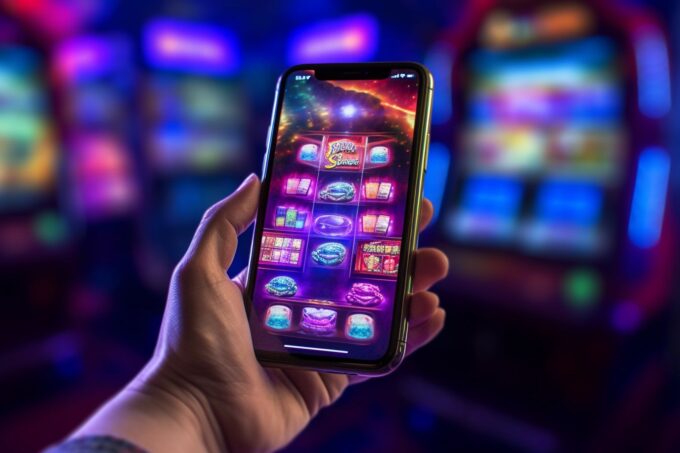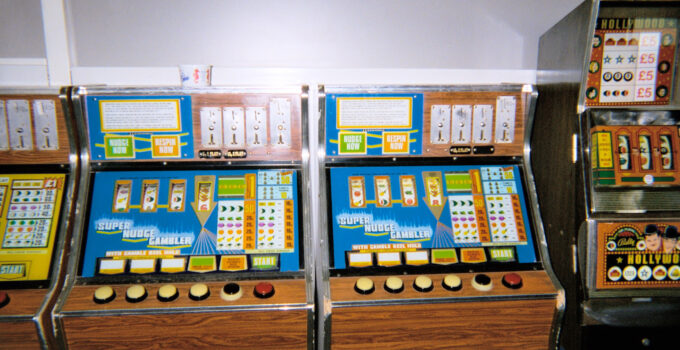Slot machines have come a long way from their early mechanical days to the digital wonders we see today. This journey of transformation is not just a tale of technological advancement but also a reflection of how gaming has evolved to meet the changing tastes and demands of players. Let’s explore this fascinating evolution, from the clinking of coins in mechanical slots to the digital symphony of modern gaming.
The Early Years
The inception of the first mechanical slot machines marked a pivotal moment in gaming history. These early machines, such as the famous Liberty Bell developed by Charles Fey in 1895, were marvels of engineering for their time.
They operated on a simple yet effective mechanism: players would pull a lever to spin a series of reels adorned with symbols, and if the symbols lined up along the pay line, a payout was awarded. The mechanism was straightforward, but the excitement it generated was immense.
These early machines laid the foundation for the algorithm slot machines use today, although in a much more rudimentary form. The mechanical design dictated the odds and randomness of the game, a concept that remains at the core of machine design, albeit now managed by sophisticated software.
The popularity of these machines surged in the early 20th century, becoming a staple in bars, clubs, and eventually casinos. Their cultural impact was significant, symbolizing both the allure of chance and the innovation of the era.
Transition to Electromechanical

Source: ebay.com
The next significant leap in slot machine technology came with the introduction of electromechanical slots in the 1960s. The first fully electromechanical slot machine, Bally’s Money Honey, was developed in 1963.
This machine’s electromechanical workings allowed for new features like a bottomless hopper and automatic payouts of up to 500 coins without an attendant’s help.
This transition marked a significant shift in the design and operation of slot machines. The electromechanical approach allowed for more exciting gameplay and the possibility of larger payouts.
It also paved the way for more advanced bonus features and game varieties, enhancing the player’s experience and maintaining the popularity of slot machines in casinos.
The Digital Revolution
The late 20th century witnessed the beginning of the digital era in slot machines. The first video slot machine was developed in 1976 in Kearny Mesa, California.
This machine used a modified 19-inch Sony Trinitron color receiver for the display and logic boards for all slot machine functions. This innovation was a game-changer, as it replaced the traditional mechanical reels with graphical reels on a computerized display.
Video slot machines brought about a significant change in the gaming experience. They offered more elaborate themes, higher-quality graphics, and sound effects that were not possible with mechanical or electromechanical designs.
The introduction of video slots also meant that games could now include features like second-screen bonus rounds, further diversifying the gameplay and attracting a broader audience.
The Rise of Online and Mobile Gaming

Source: fruityslots.com
The advent of the internet and mobile technology ushered in a new era for slot machines: the transition to online and mobile platforms. This evolution brought slot gaming right into the palms and living rooms of players, offering unprecedented accessibility and convenience.
Online gaming replicated the experience of physical machines but with added benefits like greater variety, 24/7 availability, and the comfort of playing from anywhere. The development of mobile technology further revolutionized the industry. Slot games became available on smartphones and tablets, allowing players to enjoy their favorite games on the go.
This mobility factor played a crucial role in expanding the reach of slot gaming, attracting a new generation of players who valued convenience and accessibility. The integration of secure online payment methods made transactions smoother, further enhancing the appeal of online and mobile gaming.
Modern Innovations
In recent years, technology has seen the integration of cutting-edge graphics and sound effects, significantly enhancing the gaming experience.
These advancements are not just about aesthetics; they create more immersive and engaging games that captivate players. The use of high-definition visuals and surround sound systems in slot games transforms the simple act of spinning reels into a more holistic entertainment experience.
Another crucial development in modern gaming machines is the use of Random Number Generators (RNGs). RNGs ensure fairness and unpredictability in the game outcomes, fostering trust among players.
This technology is critical in both physical and online slots, as it guarantees that the results of each spin are entirely random and not manipulated.
Additionally, modern slots have introduced interactive and immersive gaming features, such as themed games, storylines, and interactive bonus rounds. These features not only make the games more enjoyable but also increase player engagement by making each slot game a unique adventure.
Future Trends

Source: telemediaonline.co.uk
Looking ahead, the future of slot machine technology is poised for exciting advancements. One of the most anticipated developments is the integration of virtual reality (VR) and augmented reality (AR).
These technologies have the potential to revolutionize slot gaming by creating fully immersive environments. Imagine donning a VR headset and being transported to a virtual casino, complete with interactive slot machines and a realistic gaming atmosphere.
Another trend to watch is the continued emphasis on ethical considerations and responsible gaming in the digital era.
As technology advances, ensuring that players engage with slot games in a healthy and controlled manner becomes increasingly important. This might involve more sophisticated self-limiting tools on online platforms and heightened awareness campaigns about responsible gaming practices.
Conclusion
The journey from mechanical to digital slot machines is a testament to the relentless innovation in gaming technology. This evolution has not only transformed the way we play slots but also broadened the appeal of slot gaming to a wider audience.
As technology continues to advance, we can expect even more exciting developments in slot gaming, further enhancing the player experience and shaping the future of this ever-evolving industry.







